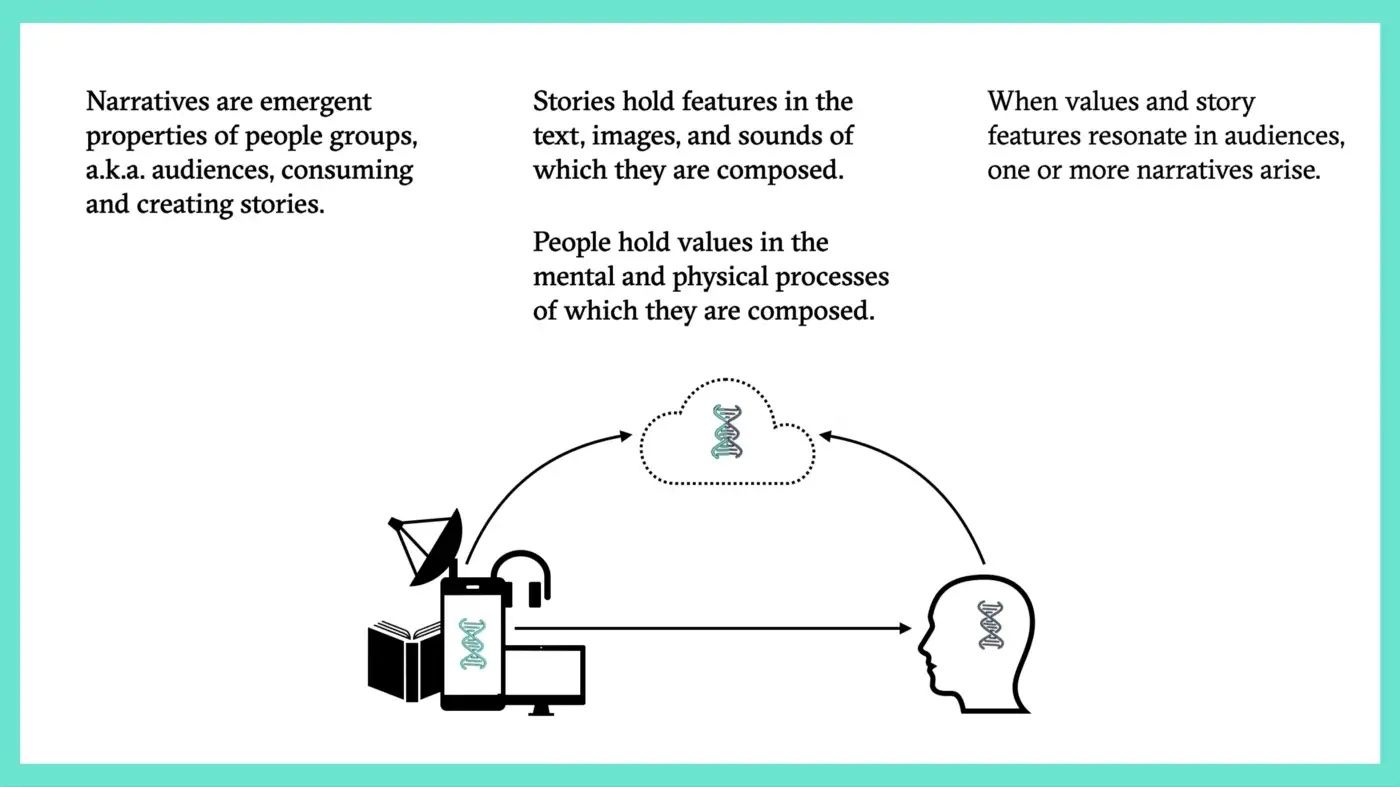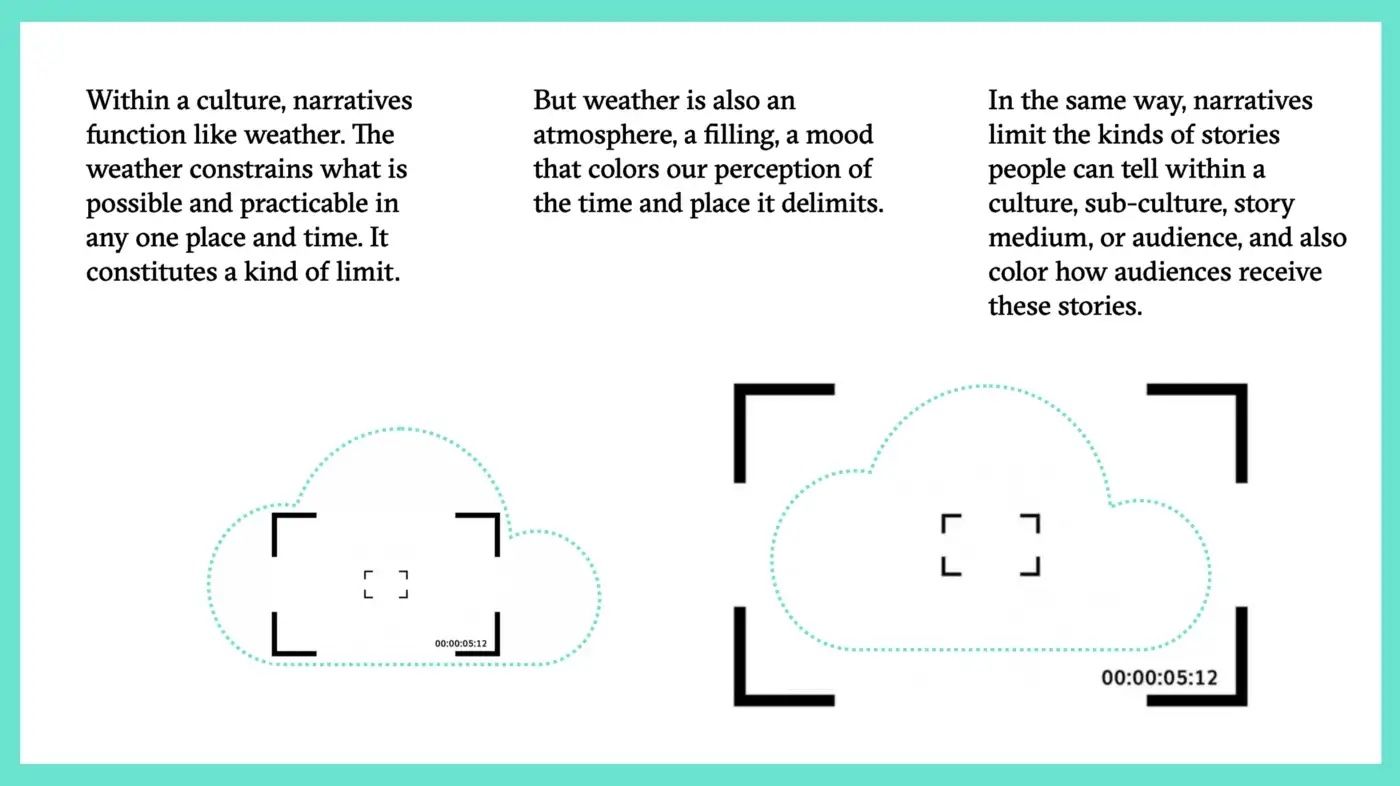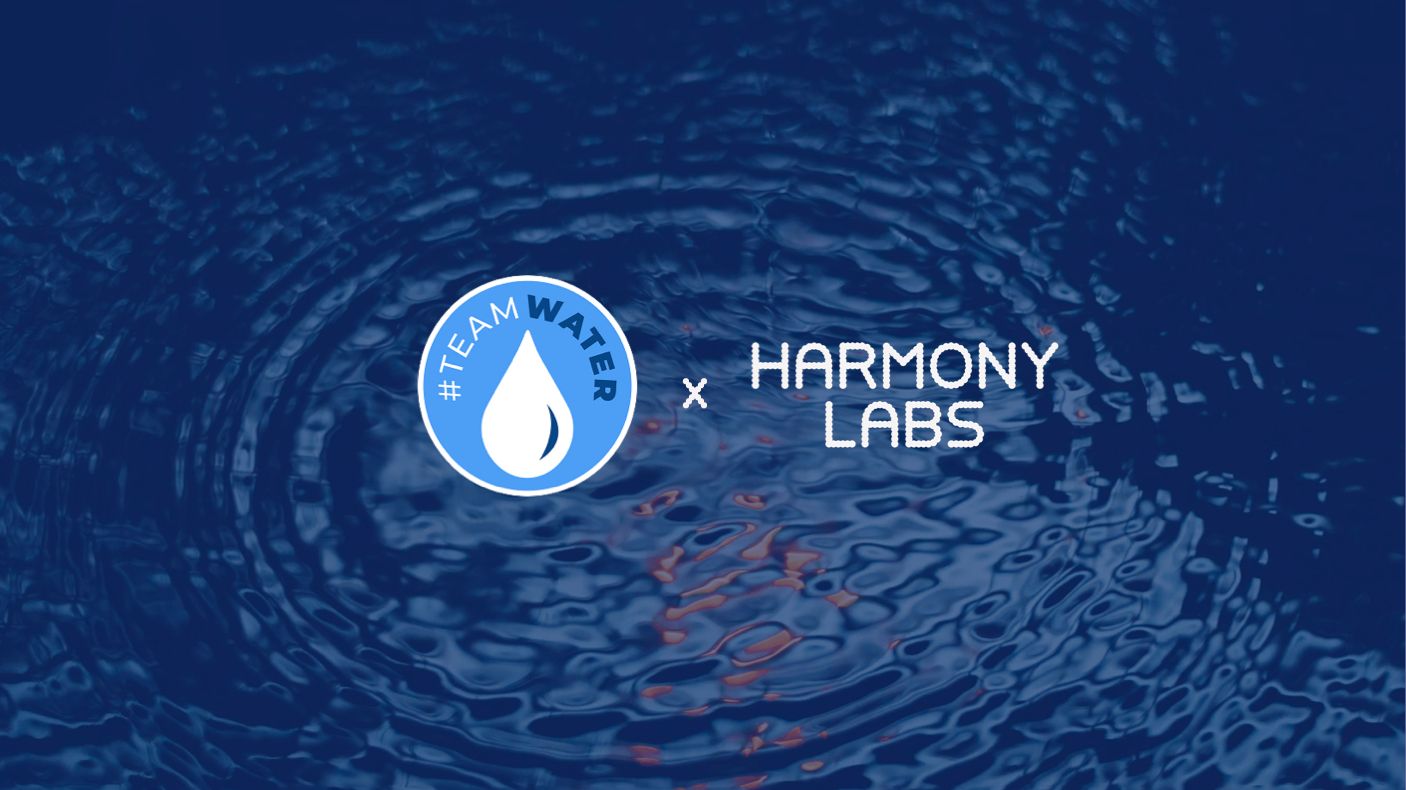Four Principles For Building Power in Media


2021-02-26
The Narrative Observatory wants to help people skillfully channel the immense power of story, audience, and narrative to shape our future. To do that, we need to understand what story, audience, and narrative actually are and how they interact. We need a theory, a model that works. Over the last year, again and again, our work on the Narrative Observatory has evolved our view of this model. Here’s the latest update, since our post of the same title a few months ago.

This means that to identify and measure narratives, we need to start by identifying stories actual people actually engage with. Once we’ve identified the stories audiences are engaging with, we put them in front of another set of people who read the stories—hundreds or thousands of them—and tell us the narratives they see. So we aren’t just looking at stories in isolation, counting raw volume, topics, hastags, bot traffic, or other story features. Nor are we surveying or interviewing people, then classifying their responses. We’re looking at how media stories, by resonating inside of audiences, yield or trigger narratives.

This means we care about a narrative if we observe it arising and persisting across multiple audiences and media types. There are, we imagine, innumerable highly personal, private narratives that arise as people process stories, but which never really catch on or circulate in a culture. (For instance, reading a story about a food bank might trigger in me a narrative about the generosity of my Aunt Sue, who runs her church’s shelter.) These highly personal, private narratives are not our concern. We’re looking for the small number of narratives about an issue that are sufficiently sticky, persistent, or well rooted to show up across, say, online news, social media, entertainment television, and music, as well as in audiences with distinct values profiles. Like these narratives about poverty and economic mobility in the U.S.

This means that, although the work of narrative change happens at the level of story and audience—varying the what, how, where, and to whom of the stories we’re telling—we need to know the narrative landscape as a whole to hypothesize how the stories we tell will land with audiences. We need to know the narratives we would like to see shrink or evolve, as well as the narratives we would like to see grow, in order to create, test, and refine stories that effectively contribute to narrative change.
This model powers the first audience-related tool to come out of the Narrative Observatory, as well as our ongoing topical analysis. Let us know what you think at hello@harmonylabs.org, so we can continue to refine this work in progress.



